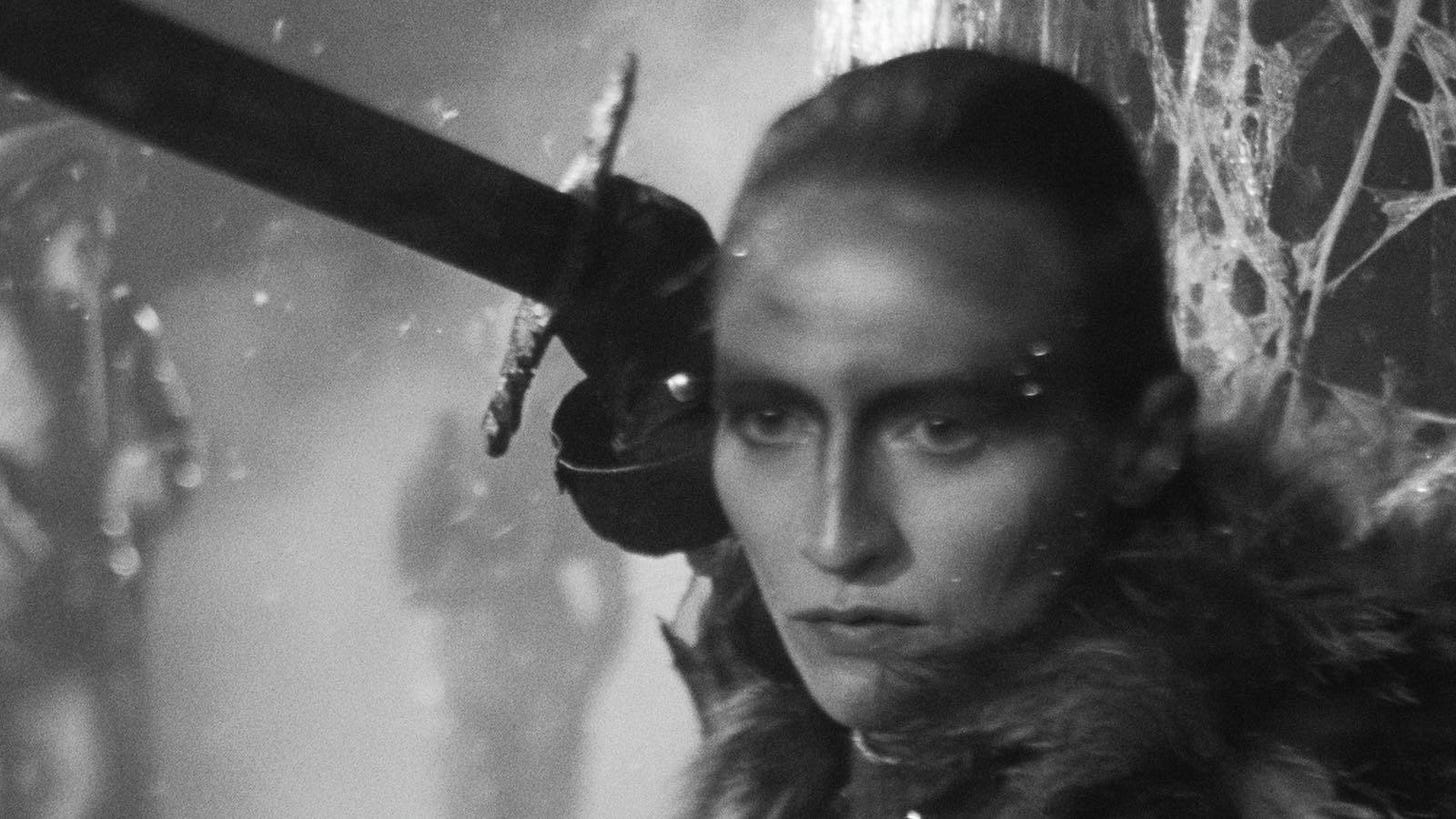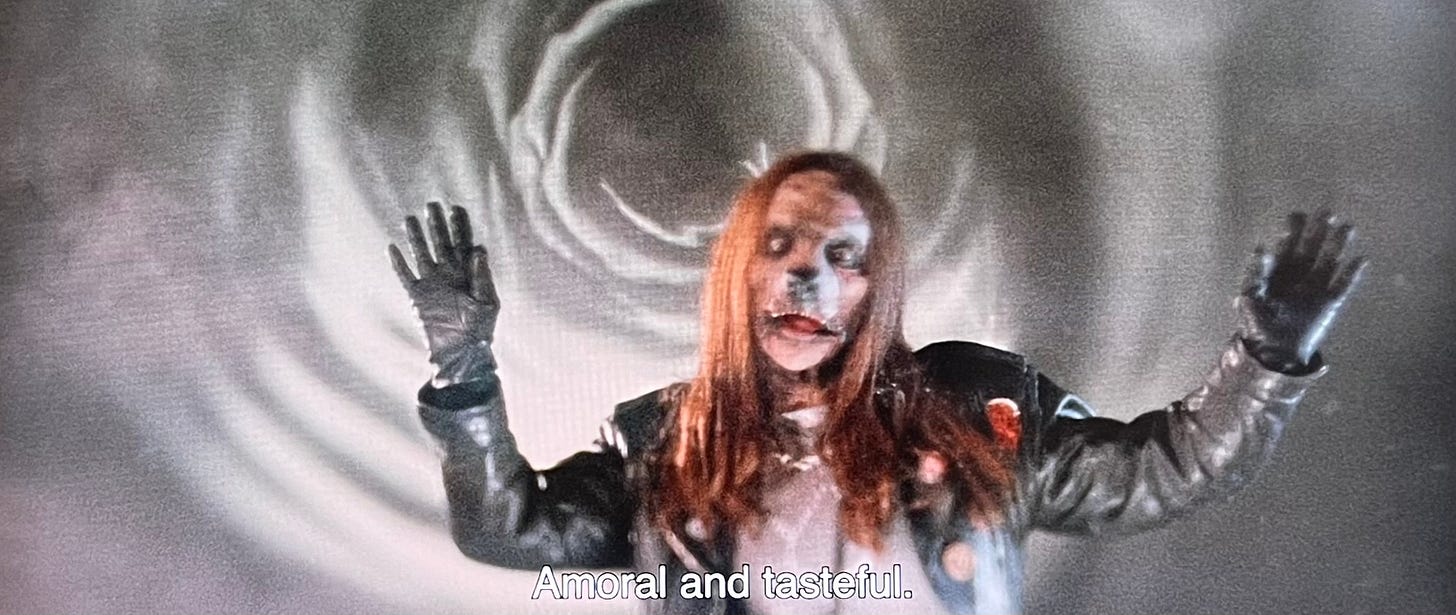Six lives and six deaths mark the poetic journey of Conann. Doomed to die across all eras, across all myths, and across all the ages, these journeys are chronicled by Rainer, a dog of the underworld, as they travel together through the abyss.
Created by Robert E. Howard for the old pulp magazines of the 1930s, Conan the Barbarian, also known as Conan the Cimmerian, is a famous hero of the sword and sorcery genre. Set in the legendary Hyborian Age, an ancient time and long forgotten bronze/iron age era of Antiquity in a time after the fall of Atlantis, Conan fights bandits, pirates, wizards, demons, and gods.
Born on a battlefield and the son of a blacksmith, Conan is a Cimmerian, a people who are supposed to be descendants of the Atlanteans, and ancestors of the modern Gaels. Honorable and loyal, with a wry sense of humour, Conan is a renowned warrior who possesses great strength, guile, and skill. With long black hair, blue eyes, tanned skin, and giant stature, he is often depicted wearing a barbarian's garb. His earliest appearance was in the 1931 short story "People of the Dark” by Robert E. Howard, and before his death, Howard wrote 21 more stories starring the barbarian. In the years since, countless others have continued to tell tales of Conan’s exploits.
But this movie isn’t about that Conan.
This is a movie about this Conann.
Barbarian (noun): a person from an alien land, culture, or group who is believed to be inferior, uncivilized, or more often inclined to be violent. A person who is considered extremely crude and uncivilized. A person in a savage, primitive state; an uncivilized person. A person without culture, refinement, or education; a philistine. A foreigner. In ancient and medieval periods - a non-Greek. A person living outside of, especially to the north of, the Roman Empire. A person who does not live in a Christian country, or within a Christian civilization. Among Italians during the Renaissance, a person of non-Italian origin.
She Is Conann seems to depend on a very particular idea of what constitutes a Barbarian, and I can’t quite pin down what that is. A threat to the norm? A wild and bold visionary? A dangerously daring person? Perhaps it’s an Outsider Artist? I can’t tell if this is the filmmakers deciding for themselves what barbarian means, OR… if maybe the filmmakers are just confused as to what barbarian means, and then built a whole art project around that slight misunderstanding. Either way, it’s very broadly applied throughout this film in a decidely odd way, and I suspect only part of that confusion is due to it having been translated from French to English.
Additionally, barbarism seems to be a feminine trait in this film, and maybe that’s a commentary on how violence transcends gendar, but I’m not too sure on that either, especially since it’s fair to point out, the only male character in the movie is played by a woman. Whatever it is supposed to mean, in the end, there is no end to the glitter, or to the tall, beautifully sculpted women with big broadswords.
But y’know… in an arty way.
So, featuring a very queer-coded story about love, betrayal, and finding beauty through depravity, She Is Conann is French. So very French. So very, very French. And it is stuffed with iconoclastic gender-bending women, each of them heavily armed and splattered with gore, and effusively spouting flowery dialogue. Ghoulish and filthy, it is all 80s cocaine trash chic, reminding me very much of the Derelicté show from the movie Zoolander. I doubt that’s a touchstone that the filmmakers are going for, but on the other hand, maybe they are, as this whole film feels like an art film that is a parody of an art film. Is it sincere? Yes. Is it sincerely silly? Also yes. Is it somewhat silly in perhaps unintended ways? Yeah.
This is a story that follows the many eras in the life of the barbarian queen Conann, with each era played by a different actor. It begins with Conann at the age of fifteen, where she must murder her captives and then begin her ascension to matriarch. Then the story skips ahead a decade to Conann at twenty-five, where she’s a swaggering warrior. Then at age thirty-five, she’s flung through time to the year 1998, and she’s a stuntwoman. At forty-five, she is a Nazi-coded warrior. And at fifty-five, her mortality having become apparent to her, she is a woman who desires nothing else than to pass on her grotesque legacy.
Throughout all these different eras of Conanns, she is faithfully followed by Rainer, the dog-faced, leather jacket-clad demon. “Dogging” Conann’s heels throughout her life, taking snapshot momentos of Conann at her worst moments with their polaroid camera, Rainer is Conann’s constant and disquieting shadow. Serving as narrator and as a one-person Greek Chorus, Rainer mocks Conann on her journeys, prodding and poking and driving her ever on. “Blessed are the necrophiles,” Rainier muses, as they take pictures of the pile of corpses left in Conann’s wake, “never betrayed by their love.” It’s weird shit, but with such an undeniably strong sense of style that is a joy to watch, one that is oftenincredible looking too.
Is this film all a condemnation of the art world?
It’s hard for me to say if that’s the ultimate goal. Maybe, yeah. As Conann the Barbarian leaves her mark on the world, at first she does it with pure fiery passion, through bold confidence, but her vision soon becomes entangled in so many other distractions, the glitz and glamour, the drugs and fame, soon enough, anger and a sneering disregard for her place in that world drives her, and in the end, she only wants to die in a grand way, to leave a great legacy.
So, yeah… I think so.
At the very least, in Conann’s final era, there’s a fantastic extended scene, one that makes the whole film worth watching in my opinion. A group of young artists, each described with a witheringly pointed specificity, are invited to a dinner at Conann’s home. There, they are given the choice between a future where their art brings them wealth, fortune, and fame, or one where they are doomed to toil away in obscurity and poverty forever.
All they have to do in order to secure this bright future is eat Conann’s dead body.
This is Conann at the end of her journey, looking to secure her legacy, which is why she offers herself as a meal for the gathered artists. She tells them she will kill herself, and once she does, she encourages them to devour all of her, promising them that they will find all that they desire on the far side of consuming her remains. It’s a skewering metaphor, and one that is presented in an absolutely revolting way, as Conann’s body looks incredible, and so disgusting, like it’s made out of spam and olives
But the best part is how, once Conann goes off to kill herself and be prepared for the feast, these “true” artists, these “pure” artists, all sit around the table and discuss their options. Get up and leave? Or stay and eat Conann…? They all immediately and loudly proclaim their disgust, refusing to cannibalize their host. Revolting! Disgusting! They are not animals, they are visionaries! They do what they do for the art itself, not the fame! They can’t do this! They couldn’t do this. They shouldn’t do this? …Right?
But then, slowly, hesitantly, they all begin to help each other to start rationalizing themselves into committing this heinous act. Well, all except for one, who decides to burn everything down. It’s a fantastic piece of work, and there’s just no avoiding what the scene is saying.
Great stuff.
Gory, weird, and often struggling with walking the line between sincerity and self-parody, She Is Conann is brilliant at times. It’s also more than a little sefl-indulgent. In the end, it’s mostly a film meant for a certain crowd. If you’re not that crowd, then this probably won’t be your thing, but if you are a part of that crowd, then you’ll probably love this movie.






